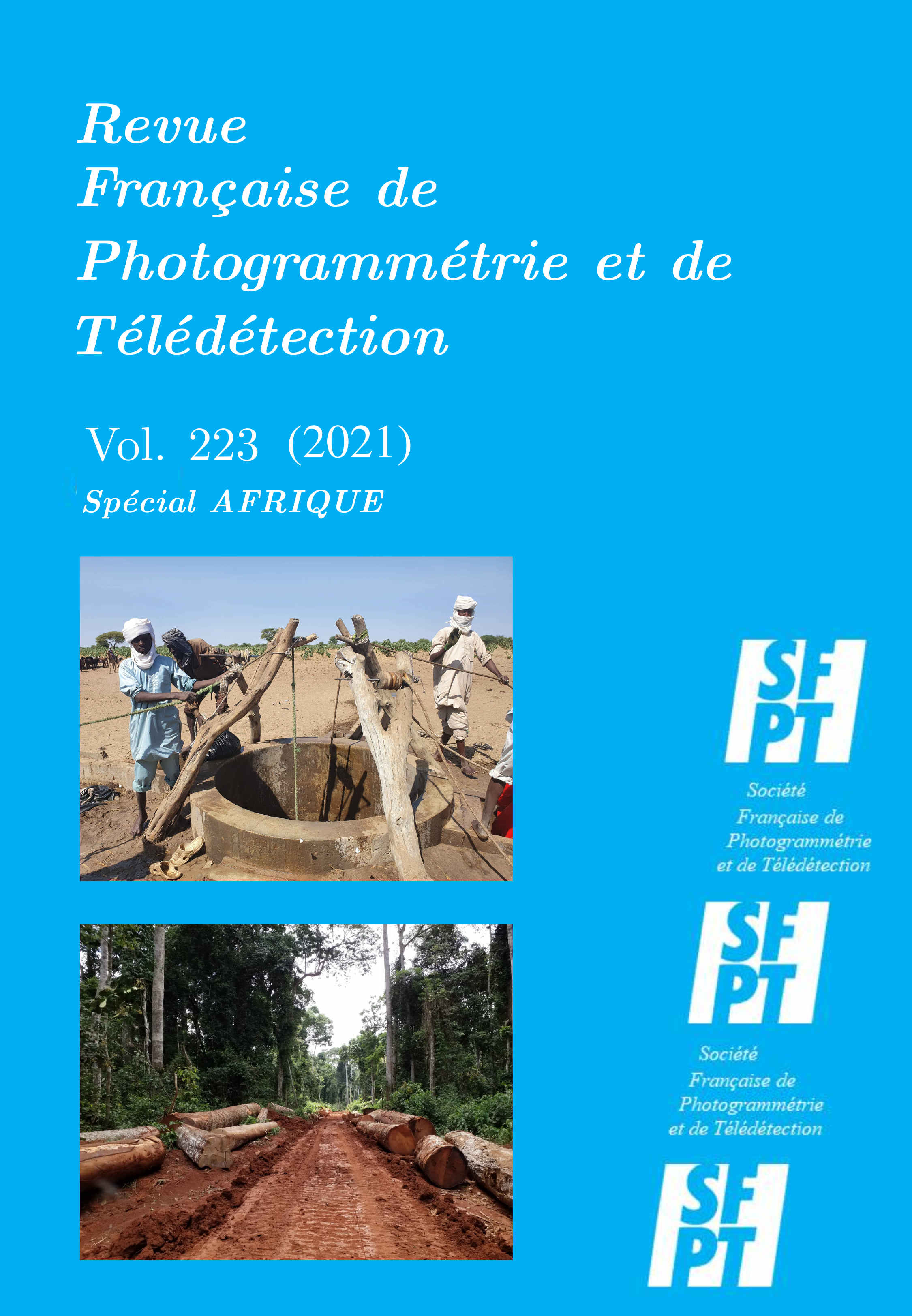Evaluation du potentiel des series d’images multi-temporelles optique et radar des satellites Sentinel 1 & 2 pour le suivi d’une zone côtière en contexte tropical: cas de l’estuaire du Cameroun pour la période 2015-2020
DOI:
https://doi.org/10.52638/rfpt.2021.586Keywords:
Tropical Ecosystem, Cameroon Estuary, land use, coastline evolution, remote sensing, Sentinel-1 and Sentinel-2 image, Random Forest supervised classificationAbstract
This work focuses on the evaluation of the potential of multi-temporal and multi-sensor (optical and radar) satellite images Sentinels 1 and 2 for mapping land use and monitoring coastline changes in a tropical ecosystem over the period 2015 to 2020. The chosen study area is the Cameroon Estuary. This zone represents a major ecological transition environment in the sub-region with the presence of protected natural reserves (mangroves, dense forest, wetlands) but also a high level of human activity (construction, agriculture, degraded forest). The methodological approach consisted of a chain of pre-processing and visual image analysis, followed by a combination of the bands from each sensor, a supervised Random Forest classification to sketch out a land use mapping and finally a digitization of the coastline. Overall, the results show that the classification, with Sentinel 2 images using 10 bands and adding 4 vegetation indices, is slightly more accurate (95.75%) than the classification from the original 13 bands (91.78%). Classification with the Sentinel 1A dual-polarized (VV, VH) images alone leads to an accuracy of 78.44%. The combination of Sentinel 2A (10 bands and 4 indices) and Sentinel 1 improves the results and leads to an accuracy of 98.76%. Our results also show that the use of multi-temporal image time series significantly improves classification accuracy compared to the use of a single image (mono-date) for both sensors, with an additional gain of 13% and 10% respectively for Sentinel-2 and Sentinel-1. Nevertheless this gain remains low for temporally stable classes. The results of analysis of the evolution of the coastline show that the Cameroon estuary is disturbed by different levels of erosion (Cape Cameroon, Northern part of Manoka Island, mouth of the Sanaga River), and accretion (Limbe, and Southern part of Manoka Island) and also by small internal variations. The fusion of optical and radar remote sensing data in the discrimination of land use classes has shown that building areas are the most vulnerable to coastal erosion. On the other hand, the presence of vegetation (mangrove, forest) stabilizes and protects the coast from possible risks of this nature.
Downloads
Downloads
Published
Versions
- 2022-01-26 (3)
- 2021-11-02 (2)
- 2021-08-25 (1)
How to Cite
Issue
Section
License
Copyright (c) 2021 Nourdi Njutapvoui, RUDANT Jean Paul , ONGUENE RAPHAEL

This work is licensed under a Creative Commons Attribution 4.0 International License.






